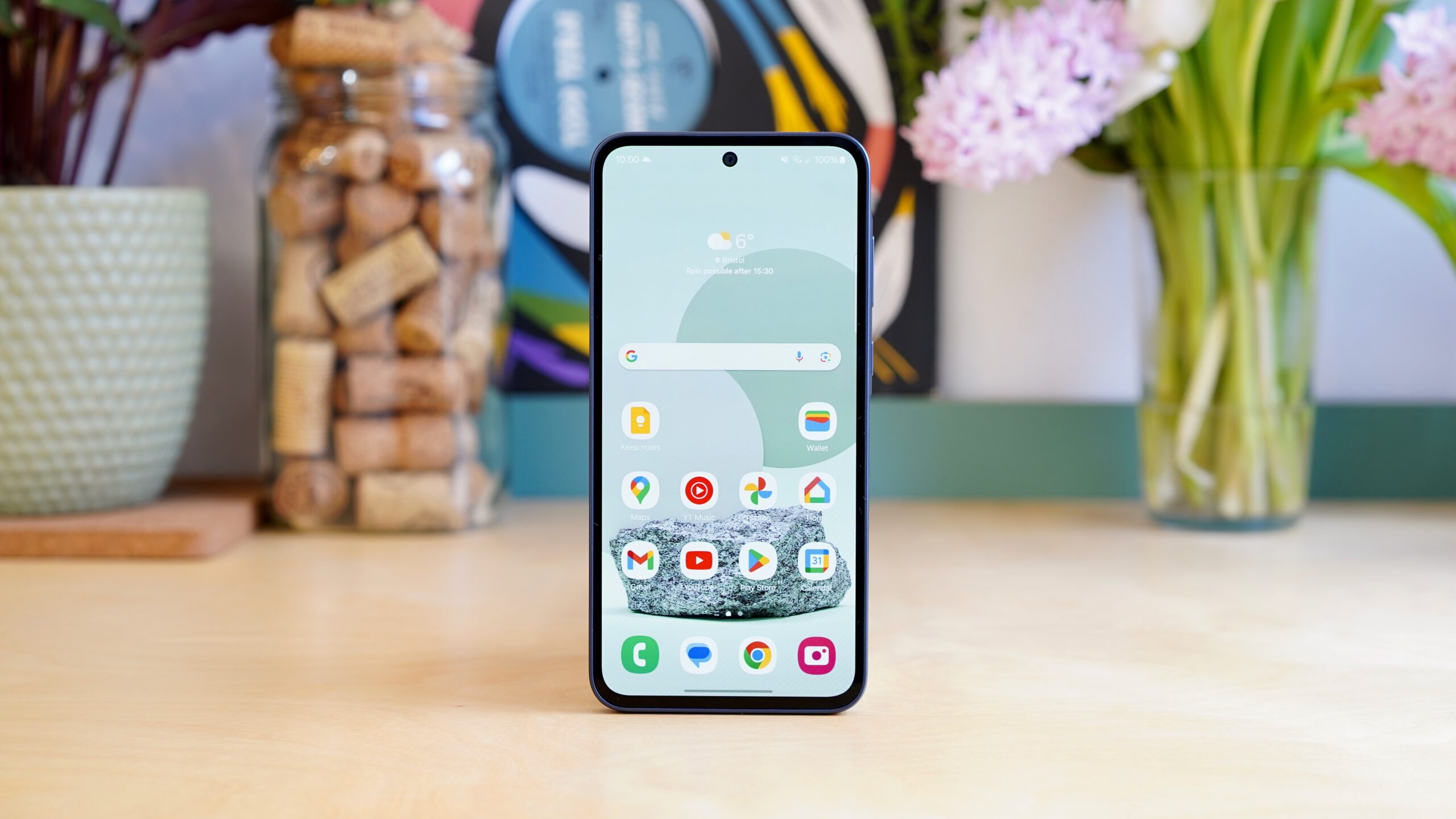Verdict
It doesn’t look or feel particularly exciting, but the Samsung Galaxy A35 5G is one of the most balanced phones available for less than £350. Acceptable performance, a decent main camera, solid build quality, and strong stamina make it a safe bet within its class.
Pros
- Solid build quality
- Decent main camera
- Strong battery life
Cons
- Screen not the brightest
- Secondary cameras not great
- Design rather bulky
-
Decent main cameraSamsung’s new 50MP main camera captures decent shots in good lighting -
Two day battery life potentialIf your usage is light, you’ll be able to get through two full days before it’s time to recharge -
Extensive software supportFour years of OS updates and five years of security updates is very good for the money
Introduction
You can always count on Samsung to take the fight to Apple in the flagship phone category, but it’s had to work hard of late to remain competitive in the mid-range market.
The Samsung Galaxy A35 5G shows just how hard it’s having to scrap. This is a phone that carries across some of the Galaxy A34 5G’s most appealing features while also packing a couple of key upgrades – all at a slightly lower starting price of £339.
This new price pitches it directly up against the Redmi Note 13 Pro 5G, and very close indeed to the Nothing Phone (2a) and Motorola Edge 40 Neo. That’s some high-grade competition.
With the new Galaxy A55 also arriving for £100 more, Samsung really needs to hit the value sweet spot here.
Design
- Glass back, Gorilla Glass Victus+ front
- Plastic frame, but surprisingly heavy
- IP67 dust and water resistance
Samsung has stuck with familiar design principles for the Galaxy A35 5G. It looks a lot like the Galaxy A34 5G, and from the front and the back it also looks a lot like the Galaxy S23 FE.
There’s one noticeable embellishment to its flattened frame. The power and volume buttons on the right-hand edge stand out a little, which feels nice under the thumb when holding the phone in your right hand.
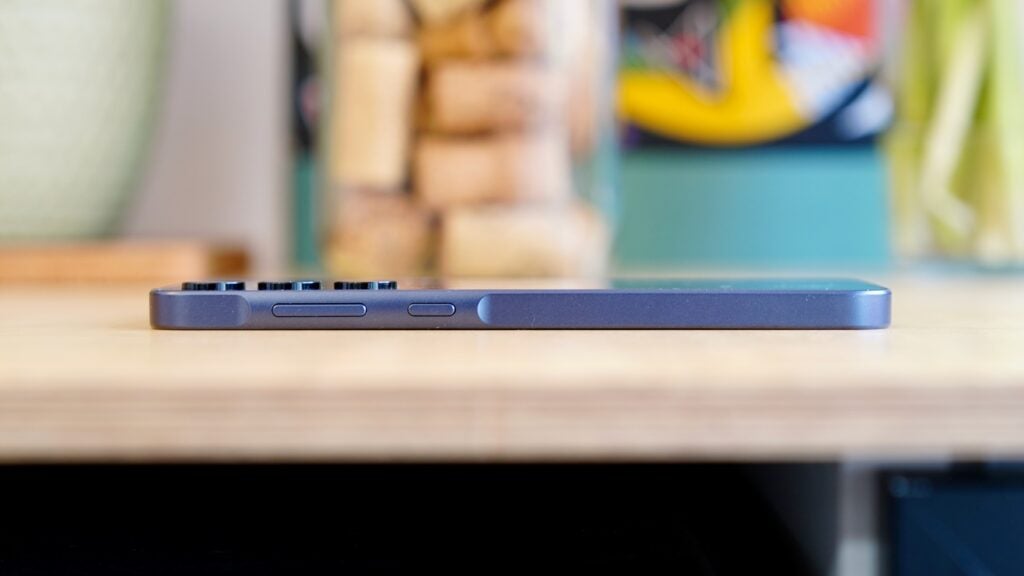
I’ve mentioned the likeness already, but the Galaxy A35 5G really does give me distinct Galaxy S23 FE vibes. Not only does it look very similar, but it’s exactly the same 8.2mm thickness, and it weighs exactly the same 209g.
The latter fact is somewhat surprising given that the Galaxy A35 5G employs an ostensibly lighter plastic frame. It doesn’t feel too cheap, however, thanks to the use of glass on the rear of the device.
Meanwhile, the Gorilla Glass Victus+ used on the front of the phone is actually better than the Victus 5 in the Galaxy S23 FE.
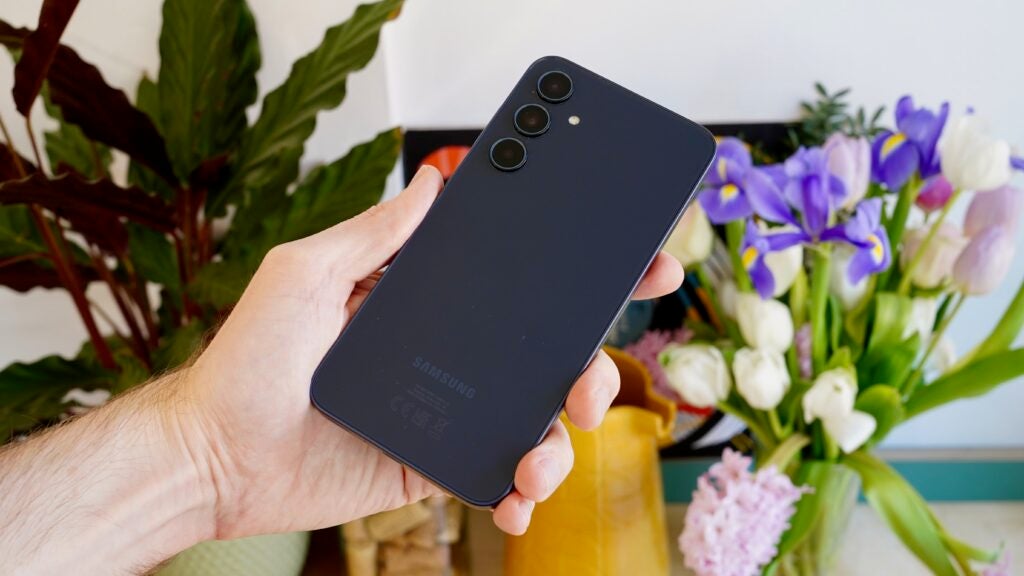
Another welcome premium touch here is IP67 certification. It’s not quite flagship-standard, and the Motorola Edge 40 Neo gives you IP68 for £300, but this still provides a good deal more water resistance than most sub-£350 phones.
All in all, this is a substantial, well-built phone that feels nicer and better put together than other similarly priced phones such as the Nothing Phone (2a) – even if it doesn’t look as interesting.
Screen
- 6.6-inch 120Hz AMOLED
- 1080 x 2340 (FHD+) resolution
- 1000 nits (HBM)
The Galaxy A35 5G has a 6.6-inch 1080 x 2340 display, which is closer (in size terms at least) to the 6.7-inch Galaxy S24 Plus than to the 6.4-inch Galaxy S23 FE. It also features a 120Hz refresh rate, though it lacks the full scalability of an LTPO panel.
In truth, it’s much the same screen as that of the Samsung Galaxy A34 5G before it. Indeed, with a stated peak brightness of 1000 nits in high brightness mode (HBM), it seems to be exactly the same panel.
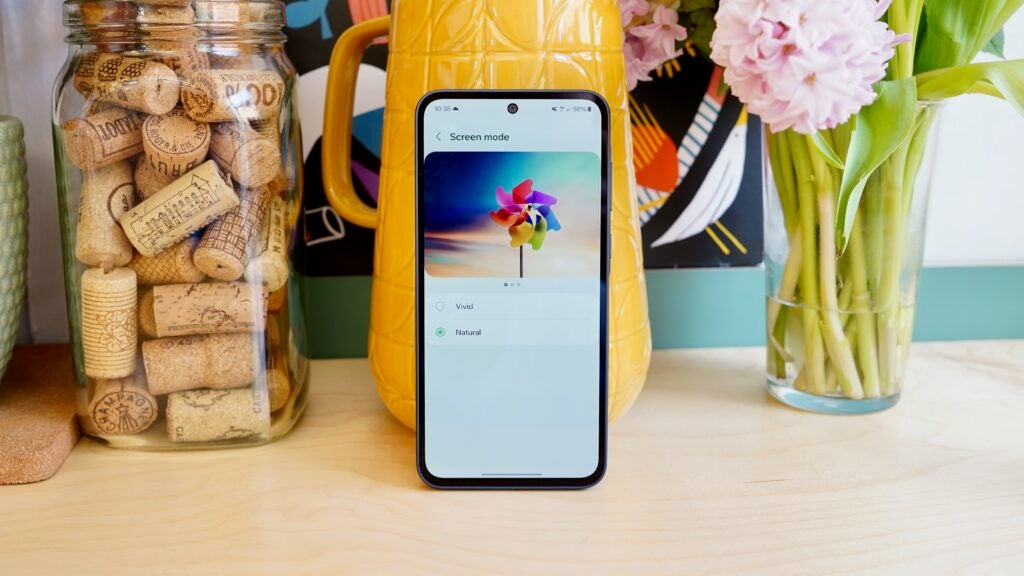
Turn auto-brightness off, and the top brightness setting remains comfortable on the eyes even when viewed indoors. Ideally you’d want to be cranking it down in such a situation.
Sure enough, I measured a top brightness of 384 nits, which really isn’t too great. The Motorola Edge 40 Neo and the Nothing Phone 2a both output brighter pictures for less money.
The Galaxy A35 5G display is reasonably colour-accurate though, at least once you switch away from the default Vivid setting to the more natural-looking Natural mode.
There’s a proper in-display fingerprint sensor provision here, which I found to be nice and reliable. It’s certainly better than some other affordable phones I’ve used lately (Redmi Note 13, I’m looking at you).
Performance
- Exynos 1380
- 6GB of RAM
- 128GB of storage
Samsung has packed the Galaxy A35 5G with an Exynos 1380 processor, which is a modest but welcome step up from the Dimensity 1080 of the Galaxy A34 5G.
This is a bit of smart recycling from Samsung, as it used the Exynos 1380 in last year’s Galaxy A54 5G – albeit with just 6GB of RAM rather than 8GB. It’s backed by 128GB of internal storage, and there is a microSD slot should you wish to expand that.
Just like last year’s pricier mid-ranger, the Galaxy A35 5G runs well enough in general usage. It’s not flawless though, with the odd pause or stutter when jumping between apps, or when hopping between the main and ultra-wide cameras.
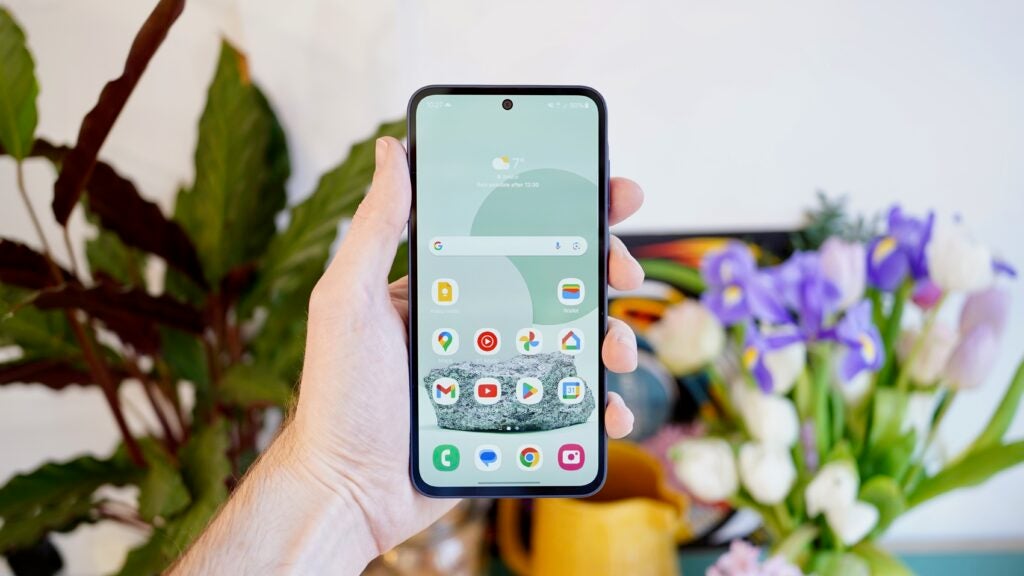
Console racer Wreckfest remains playable on medium settings and a 30fps cap, so gaming certainly isn’t out of the question, even if it’s far from a strong performer.
Benchmark scores bear this middling performance out, with modest scores across our usual selection of CPU and GPU tests. It competes well with the Nothing Phone (2a) in CPU terms, but drops well short in GPU terms.
Samsung’s phone remains nice and cool under pressure, and it scored close to perfect marks in the 3DMark Wildlife Extreme Stress Test. This means that its performance remains at a consistent level across extended periods of intensive use.
Camera
- 50MP main camera
- 8MP ultra-wide with 5MP macro
- 13MP selfie camera
Samsung has switched to a bigger, sharper main camera with the Galaxy A35 5G, and it pays off. The Galaxy A35 5G takes good shots for a sub-£350 phone.
Snaps taken in strong daytime lighting possess that customary Samsung pop, with vibrant blue skies, strong contrast, and solid detail. It deals with HDR scenarios well, dealing with highlights and shadows alike. Indoors shots, too, manage to maintain their vibrancy even as the detail level drops.
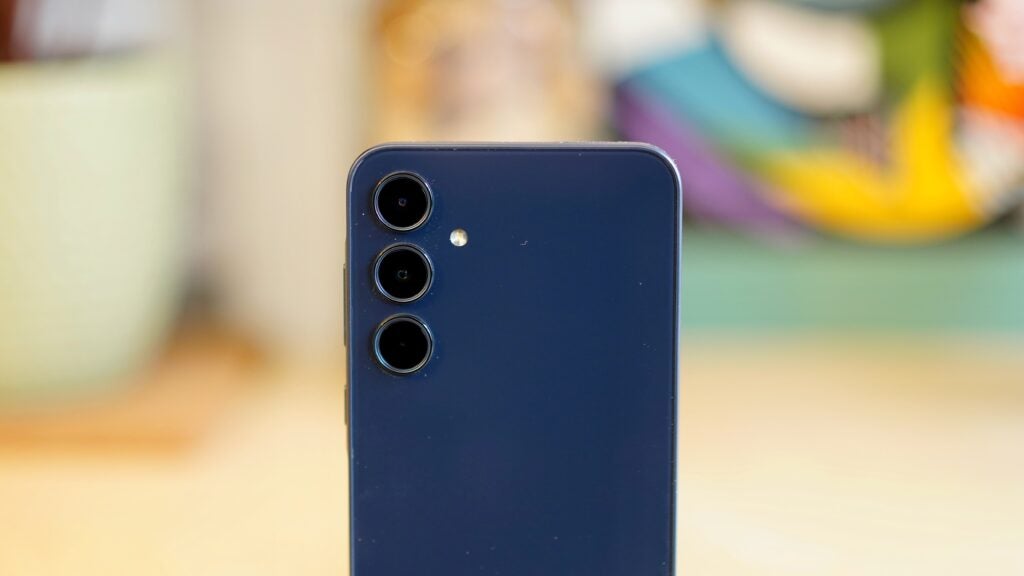
Night shots aren’t dealt with anywhere near as confidently. Even shots with plenty of artificial lighting lack a certain clarity, with a certain softness to them – though to Samsung’s credit, they don’t punch up the brightness to an unnatural degree. There’s a certain naturalness to the look of these night shots that isn’t always present in cheaper phones.
The 8MP ultra-wide camera represents a big drop off in quality. Shots taken with this are flatter and dimmer than the main sensor, with inferior exposure and detail. They’re far from unusable, though, and it’s far from uncommon to experience such a drop off even in more expensive phones.
There’s no dedicated telephoto camera here, but that decent main sensor and Samsung’s solid image processing mean that the cropped-in results look good, at least at 2x. Any further and the lack of sharpness starts to show.
Instead of a telephoto there’s a macro camera. It’s fairly pointless, though at least it stretches to a semi-usable 5MP. Still, the simple dual-sensor approach of the Nothing Phone (2a) and the Pixel 7a would have been preferable here.
Video captures at up to 4K at 30fps or 1080p/60fps, and the footage I captured was reasonably crisp and steady, courtesy of OIS.
Around front there’s a 13MP camera that produces solid selfies with reasonably rich colours and accurate skin tones, and a subtly defocused background. You have a choice between two angles, though the ‘close’ one is basically just cropping in a little. Still, it’s useful for switching between solo selfies and group shots.


Software
- Android 14 and One UI 6.1
- Samsung-branded alternative apps still present
- 4 years Android updates, 5 years security updates
The Samsung Galaxy A35 runs on Android 14, topped by Samsung’s latest One UI 6.1.
Opinion varies on Samsung’s treatment of Android. For many people, it’s the only version of Google’s operating system that they’ve ever known, and switching to any other manufacturer’s approach – even Google’s own – feels jarring.
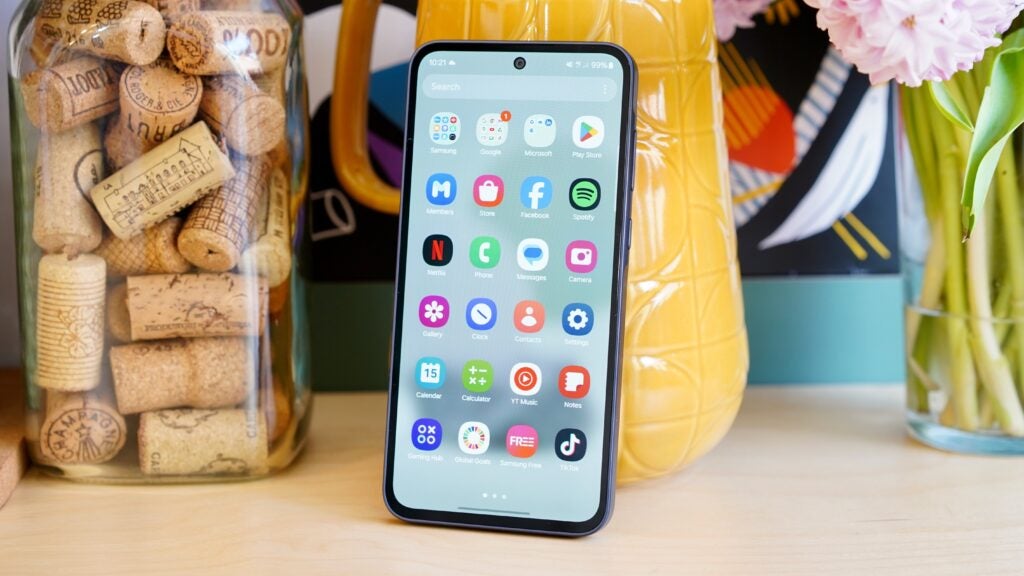
For others, Samsung’s approach is annoyingly busy, with too much app duplication, too many third-party apps, and a whole bunch of unnecessary interface tinkering. Witness the horizontally scrolling app tray, or the use of Samsung’s own payment app rather than Google Wallet.
The need to set Chrome as the default web browser and then to dive into the Settings to get Google’s Password Manager working is another point of annoyance that you don’t face on other custom Android UIs. Samsung’s Bixby assistant, meanwhile, is something you’ll probably completely ignore right up until you accidentally trigger it with a long power button press.
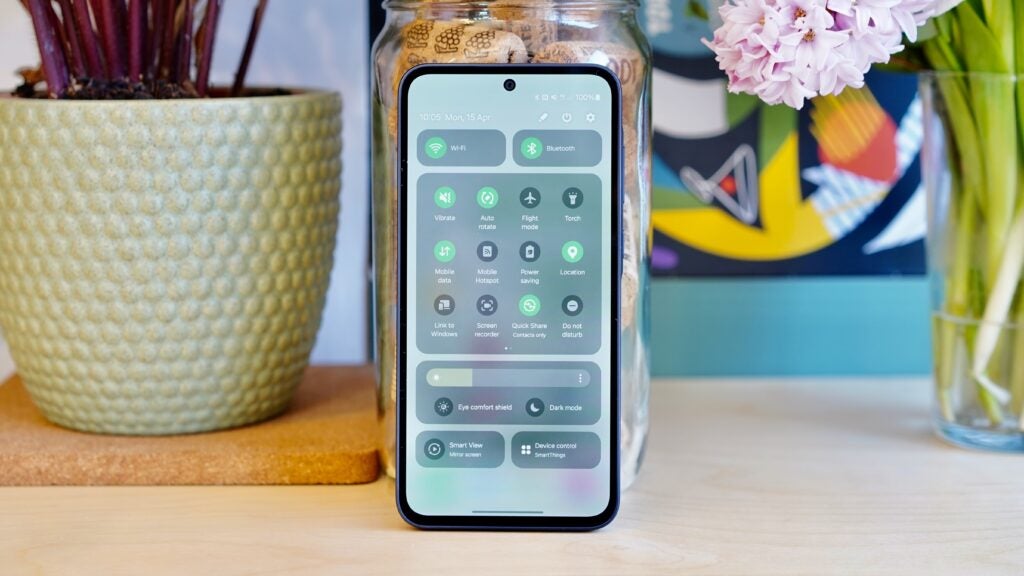
Even so, there’s no denying that Samsung’s software is packed full of features, and that it works smoothly and reliably. Samsung has been working at this for virtually all of Android’s lifespan, which has resulted in some dependably solid software.
Meanwhile, Samsung has committed to four years of OS updates and five years of security updates, which is an impressive provision at the price. It beats the Nothing Phone (2a) by a year in both cases.
Battery Life
- 5000mAh battery
- 25W charging support, no charger in box
- No wireless charging
The Samsung Galaxy A35 5G doesn’t want for stamina, with a large 5,000mAh battery easily seeing you through even the most intensive of days.
On a 16-hour day of lighter usage, which entailed 3 hours and 35 minutes of screen on time, I was left with 56% left, suggesting genuine two-day potential.
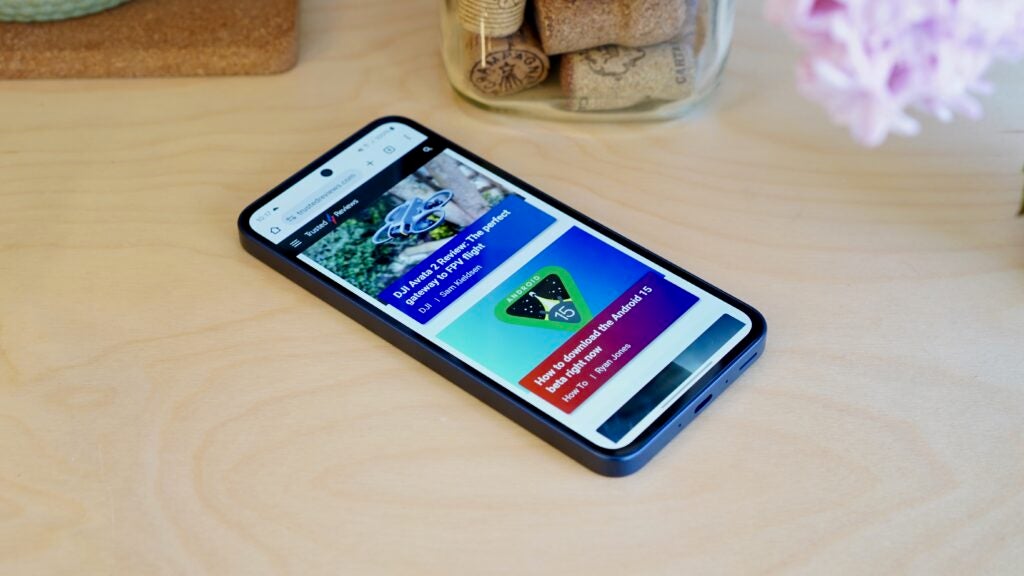
At the other end of the scale, after a 15-hour day of intensive usage with 7 hours and 20 minutes of screen on time, I still had 9% left. That’s pushing it, of course, but this really was an excessively heavy day that included several hours of Slay the Spire.
Talking of which, 30 minutes of light gaming on Slay the Spire sapped 4% of a charge with the screen brightness set to half, while an hour of Disney+ ate through 6%. That’s competitive with the Nothing Phone (2a) and its similarly impressive cell.
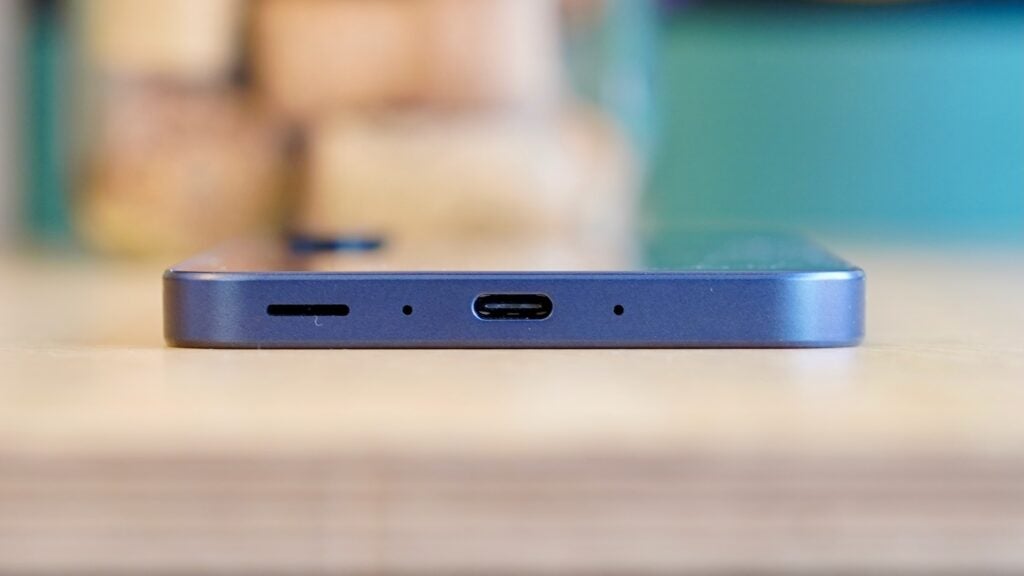
The Galaxy A35 5G falls behind its rival when it comes time to charge up, with a mere 25W charging support compared to the Nothing Phone 2a’s 45W. Even so, it doesn’t take too much longer to charge up initially, attaining 25% (from empty) in 15 minutes and 52% in 30 minutes.
You’ll need to wait around 1 hour 25 minutes for a full charge, which is a little longer than its rivals. Like the Nothing, and unlike the Redmi Note 13 Pro 5G, you don’t get a charger in the box either.
There’s no wireless charging here, but then we wouldn’t expect such a feature in a sub-£350 phone.
Latest deals
Should you buy it?
You want a decent camera for less than £350
The Galaxy A35 5G’s main 50MP camera can capture good results in decent lighting.
You want a little personality from your mid-range phone
The Galaxy A35 5G is a solid phone, but it isn’t particularly interesting to look at or hold.
Final Thoughts
The Samsung Galaxy A35 is a good option at the sub-£350 price point. It’s a little cheaper than the Galaxy A34 5G before it, but it makes some welcome improvements to its performance and camera.
It’s not the most exciting phone even within its affordable category, lacking the stand-out design of the Nothing Phone (2a) or the Motorola Edge 40 Neo. However, there’s something reassuringly solid about its look and feel, especially as it resembles some of its more expensive brothers so closely.
Performance is good enough, particularly when it comes to the CPU. Though this is no gaming powerhouse, meanwhile, the Galaxy A35 5G can run long with such intensive tasks and not break a sweat. Battery life, too, is very good.
Meanwhile, Samsung’s switch to a new 50MP main camera has resulted in some genuinely decent shots being made possible, in decent lighting at least.
It might not be the most interesting phone in its category, or even the best, but the Samsung Galaxy A35 5G is certainly one of the most reassuringly competent. When you haven’t got much money to spare on a phone, that counts for a lot.
How we test
We test every mobile phone we review thoroughly. We use industry-standard tests to compare features properly and we use the phone as our main device over the review period. We’ll always tell you what we find and we never, ever, accept money to review a product.
Find out more about how we test in our ethics policy.
Used as a main phone for a week
Thorough camera testing in a variety of conditions
Tested and benchmarked using respected industry tests and real-world data
FAQs
No, you’ll have to source your own 25W charger separately.
Yes, with an IP67 rating.


















